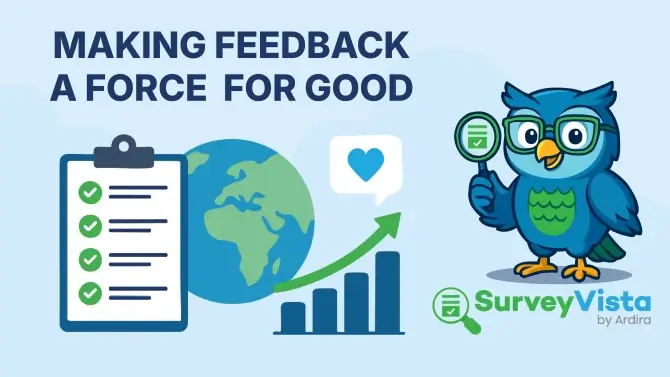Why Every GTM Organization Needs to Build Feedback Programs that Span the Entire Customer Lifecycle
In today’s competitive marketplace, Go-To-Market (GTM) teams face more pressure than ever to deliver measurable results. Despite major investments, organizations still struggle with siloed data, misalignment, and incomplete customer insights. The solution? Build robust feedback foundations that collect, integrate, understand and act on feedback throughout the customer lifecycle.
The Hidden Cost of Siloed Feedback
Organization silos, departments operating independently, lead to a fractured customer experience. Siloed feedback creates costly blind spots and leads to missed opportunities to double down on positive customer impacts, improve customer acquisition, customer experience, product needs, drive retention, and build trust—ultimately impacting both revenue and loyalty.
The Feedback Imperative
Feedback is not just a function of customer success—it’s a strategic imperative for any organization serious about growth. By establishing consistent feedback collection points across marketing, sales, customer success, and product, companies create what we call the “feedback foundations” necessary for true GTM alignment.
These foundations include:
- Unified Data Architecture: Centralizing all feedback in a single source of truth.
- Cross-Functional Visibility: Enabling every team to access the same customer insights.
- Automated Workflows: Structuring trigger-based workflows that automatically route feedback to the appropriate teams, ensuring timely responses and proactive issue resolution.
- Consistent Measurement: Standardizing metrics across the customer journey.
When executed correctly, lifecycle feedback transforms organizations—capturing insights within the CRM to create a clear customer narrative.
Centralizing in Salesforce: The Foundation of Alignment
For organizations already using Salesforce as their CRM, centralizing the feedback process within this ecosystem unlocks extraordinary efficiencies. Instead of managing multiple disconnected survey & form tools, leading companies are integrating feedback into their core systems.
This centralization delivers four primary benefits:
- Enriched Customer Profiles
When feedback data flows seamlessly into customer records, every interaction becomes more personalized and proactive. Sales and service teams gain instant context, allowing them to anticipate customer needs and address concerns before they escalate—all powered by real-time insights within the CRM. - Actionable Intelligence
Combining operational data with experiential feedback creates powerful new insights that drive decision-making across departments. - Smart Automation
Tight integration between feedback and CRM makes smart automation across all stages of the feedback process easy. Huge benefits accrue at all steps: automatically triggering highly personalized surveys; enhancing the single view of the customers with smart data mapping; rich, role-relevant reports and dashboards and automated follow-up actions. All these remove the time and effort of administering your feedback program. - Data Security and Compliance
Keeping customer data within your secure Salesforce instance not only reduces risk but also fosters customer trust by ensuring compliance with evolving privacy regulations and industry standards.
Beyond Collection: Turning Feedback into Action and Results
Collecting feedback is just the start—the real impact comes from building a deep understanding and acting on it intelligently. Customers expect organizations not only to listen but to respond in ways that show real understanding.
A meaningful feedback process has four stages:
Collect: The key here is to make it easy and relevant. Easy means the fewest possible, unambiguous questions; great look and feel that reflects your brand and a choice of channels for customers to provide their feedback. Relevant means it’s personalized, relates specifically to their experience and issued in a timely manner.
Integrate: Customer sentiment is an important data set but becomes massively more powerful when integrated with other data. People across the organization can see the feedback and adjust their actions accordingly. Integrating data allows patterns between feedback and operational and revenue performance to be identified.
Understand: Feedback provides an outside-in view of how your organization is performing and thereby the opportunity to build deeper insights, especially with its integration with other data. The key is to understand both the immediate implications of feedback, especially when it is negative, and the root causes, which helps design impactful solutions.
Act: Taking action is where you get the return on your feedback program and show customers their views are important. This is where you improve the effectiveness of your processes, address product and service weaknesses and, most importantly, strengthen your relationship with customers. Remember also that customers need to know that they have been heard and that is best demonstrated by what you do, not just what you say.
For example, when a customer submits negative feedback, an intelligent system can analyze their purchase history, past interactions, and support tickets to trigger the most relevant response—whether it’s escalating a recurring issue, flagging an at-risk account, or identifying broader trends. This seamless, automated approach ensures feedback leads to meaningful change, not just surface-level fixes.
By turning feedback into proactive, data-driven action, organizations don’t just solve problems faster—they build deeper customer trust, drive engagement, and create a continuous loop of improvement that fuels long-term success.
The ROI of Aligned Feedback Programs
Organizations that successfully implement feedback programs report significant business improvements such as:
- Higher customer retention rates
- Faster revenue growth
- Reduced time-to-resolution for customer issues
- Improved cross-team collaboration
These are not incremental gains—they represent measurable improvements that directly impact profitability and long-term business success.
Building Your Feedback Foundations: Where to Start
Creating a customer lifecycle feedback program isn’t an overnight initiative, but organizations can make significant progress by focusing on these key first steps:
- Audit Your Current Feedback Landscape
Document all existing feedback collection points across departments, identifying gaps and overlaps in your current approach. - Define Standardized Feedback Metrics
Establish consistent measurements that matter at each stage of the customer journey, from pre-sale to advocacy. - Consolidate Your Technology Stack
Centralize feedback collection within your existing CRM environment rather than maintaining multiple disconnected tools. - Create Cross-Functional Governance
Form a feedback council with stakeholders from each GTM function to ensure alignment and accountability. - Start Small, Scale Quickly
Begin with a few high-impact feedback opportunities and look to build out your feedback foundations.
Conclusion: The Competitive Advantage of Feedback Alignment
In today’s market, alignment isn’t optional—it’s a competitive necessity. Companies that unify their feedback programs respond faster to customer needs, deliver more consistent experiences, and make better strategic decisions.
The alternative—continuing with disconnected feedback systems—leads to missed opportunities, customer churn, and internal inefficiencies. Organizations that embrace a feedback framework throughout the customer lifecycle gain a decisive advantage over competitors.
The question isn’t whether your organization should implement feedback through the customer lifecycle, but how quickly you can establish these critical feedback foundations before competitors do the same.
Ready to assess your organization’s feedback foundations? Take SurveyVista’s comprehensive Feedback Foundations Assessment to identify gaps and opportunities in your current approach.
More Like This

Rajesh Unadkat 
Founder and CEO
Rajesh is the visionary leader at the helm of SurveyVista. With a profound vision for the transformative potential of survey solutions, he founded the company in 2020. Rajesh's unwavering commitment to harnessing the power of data-driven insights has led to SurveyVista's rapid evolution as an industry leader.
Connect with Rajesh on LinkedIn to stay updated on the latest insights into the world of survey solutions for customer and employee experience management.



